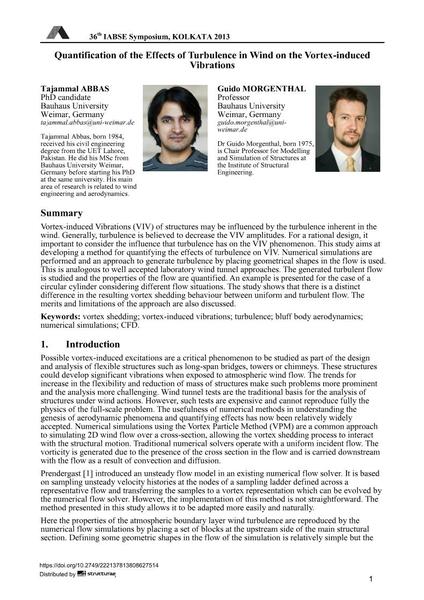Quantification of the Effects of Turbulence in Wind on the Vortex-induced Vibrations

|
|
|||||||||||
Bibliografische Angaben
| Autor(en): |
Tajammal Abbas
Guido Morgenthal |
||||
|---|---|---|---|---|---|
| Medium: | Tagungsbeitrag | ||||
| Sprache(n): | Englisch | ||||
| Tagung: | IABSE Symposium: Long Span Bridges and Roofs - Development, Design and Implementation, Kolkata, India, 24-27 September 2013 | ||||
| Veröffentlicht in: | IABSE Symposium Kolkata 2013 | ||||
|
|||||
| Seite(n): | 1-8 | ||||
| Anzahl der Seiten (im PDF): | 8 | ||||
| Jahr: | 2013 | ||||
| DOI: | 10.2749/222137813808627514 | ||||
| Abstrakt: |
Vortex-induced Vibrations (VIV) of structures may be influenced by the turbulence inherent in the wind. Generally, turbulence is believed to decrease the VIV amplitudes. For a rational design, it important to consider the influence that turbulence has on the VIV phenomenon. This study aims at developing a method for quantifying the effects of turbulence on VIV. Numerical simulations are performed and an approach to generate turbulence by placing geometrical shapes in the flow is used. This is analogous to well accepted laboratory wind tunnel approaches. The generated turbulent flow is studied and the properties of the flow are quantified. An example is presented for the case of a circular cylinder considering different flow situations. The study shows that there is a distinct difference in the resulting vortex shedding behaviour between uniform and turbulent flow. The merits and limitations of the approach are also discussed. |
||||
| Stichwörter: |
numerische Simulationen wirbelerregte Querschwingungen CFD
|
||||
